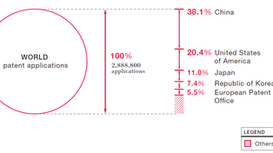How do we know whether atrademark infringes an existing trademark right?
- Admin
- May 19, 2023
- 1 min read

In determining whether trademark infringement has occurred, two factors are evaluated: (1) the similarity between the marks and the goods or services they represent, and (2) the likelihood of confusion between the two marks. For example, if there are two identical marks for "Polar Bear," one representing washing powder and the other representing refrigerators, they are unlikely to cause confusion because the underlying goods are different.
To determine whether two marks are identical, standards such as "holistic observation" and "isolated comparison" are used, taking into account the general attention of the relevant public. Consumers shopping habits are simulated to determine whether confusion is likely to occur. For example, consumers generally rely on their visual memory to find their favorite brands in a supermarket and do not scrutinize them closely.
In comparing goods, factors such as function, use, industry sector, sales channel, and consumer demographics are considered. For example, Coca-Cola and mineral water are considered similar goods because they are both drinks and are usually found on the same supermarket shelf. The Nice Classification of goods and services can also be used to compare two types of goods, but if there is sufficient evidence to suggest that consumers perceive a connection between two products even though they are in different classes, the Nice Classification may be overruled.





















Comments